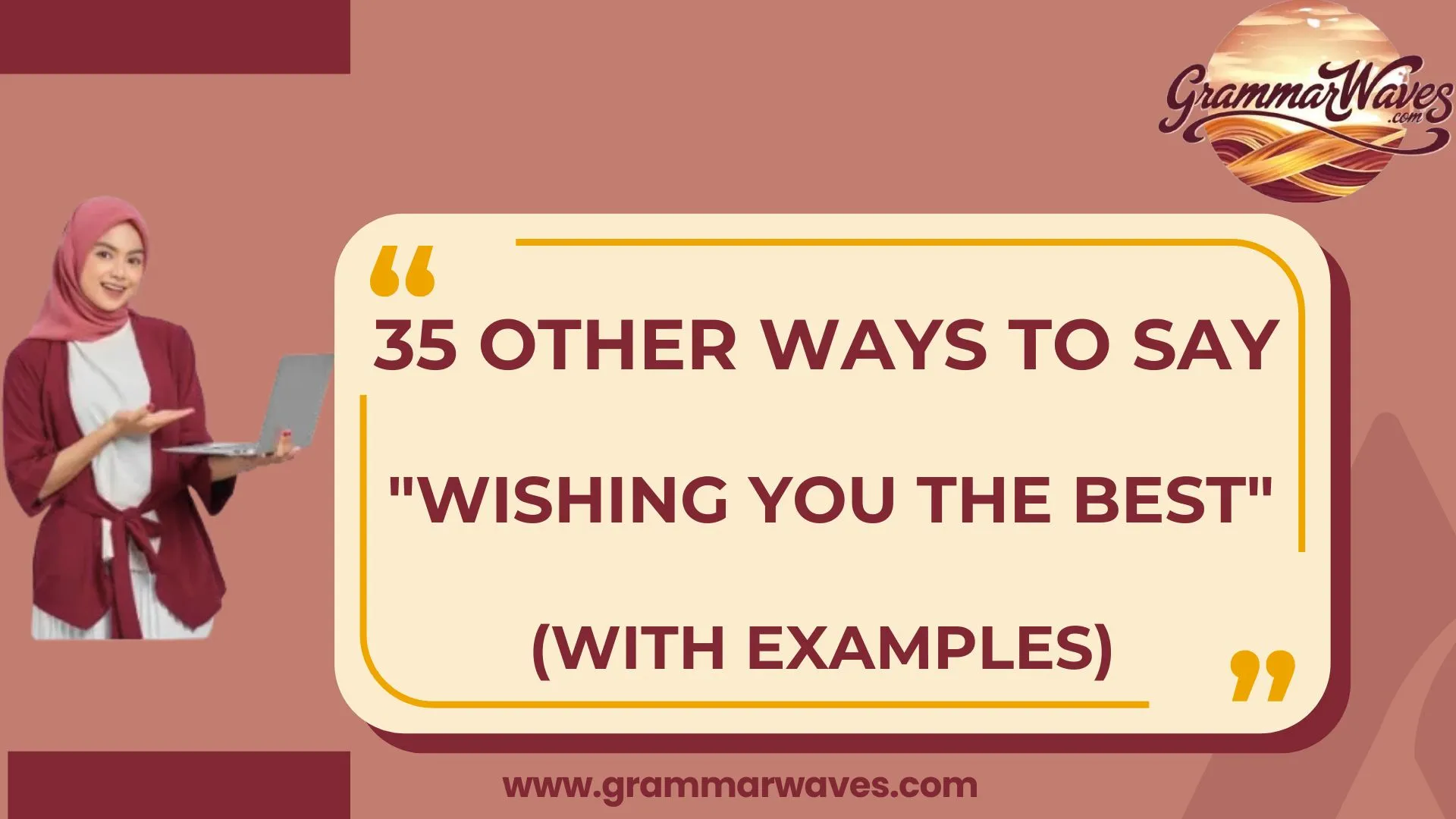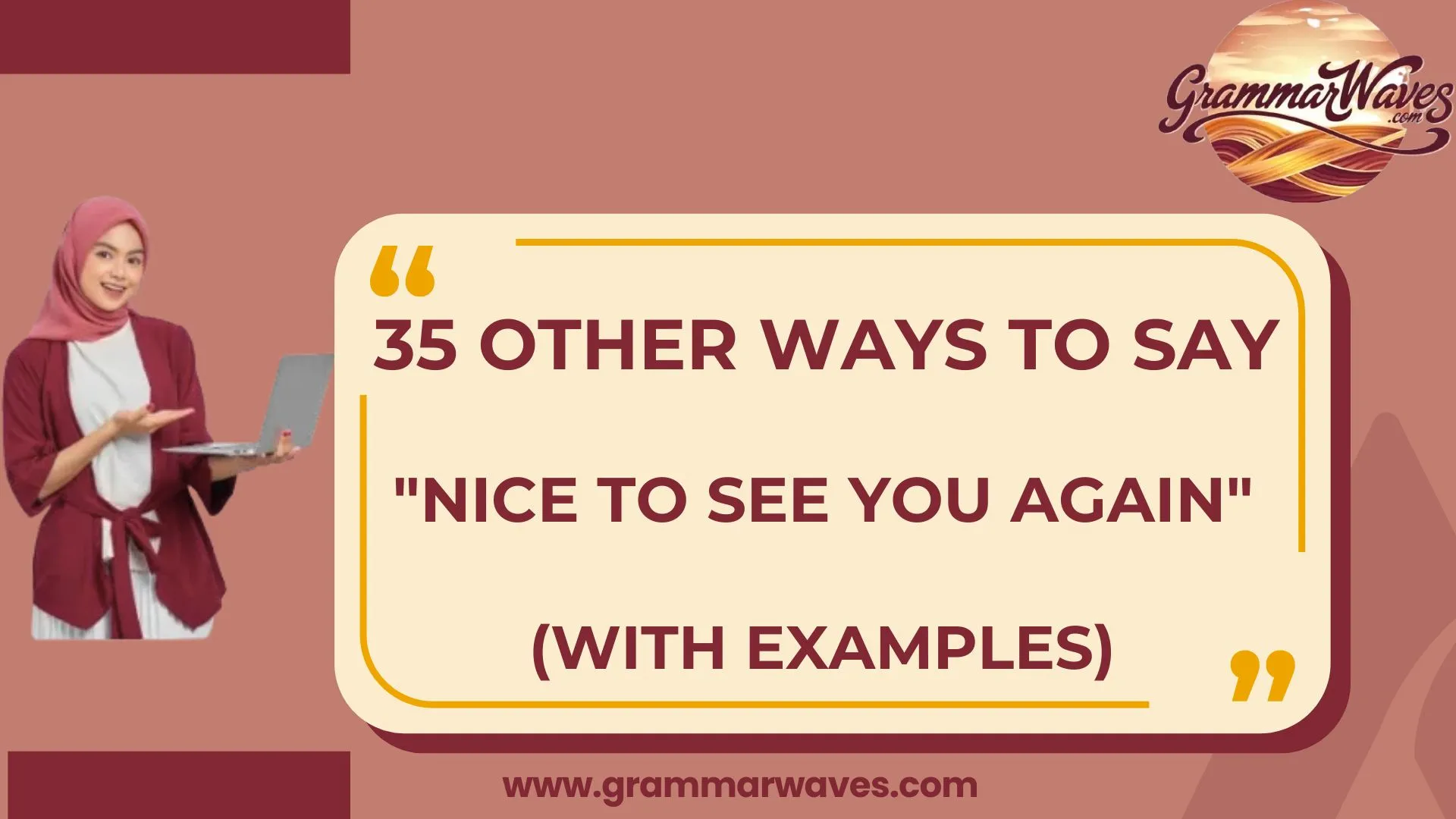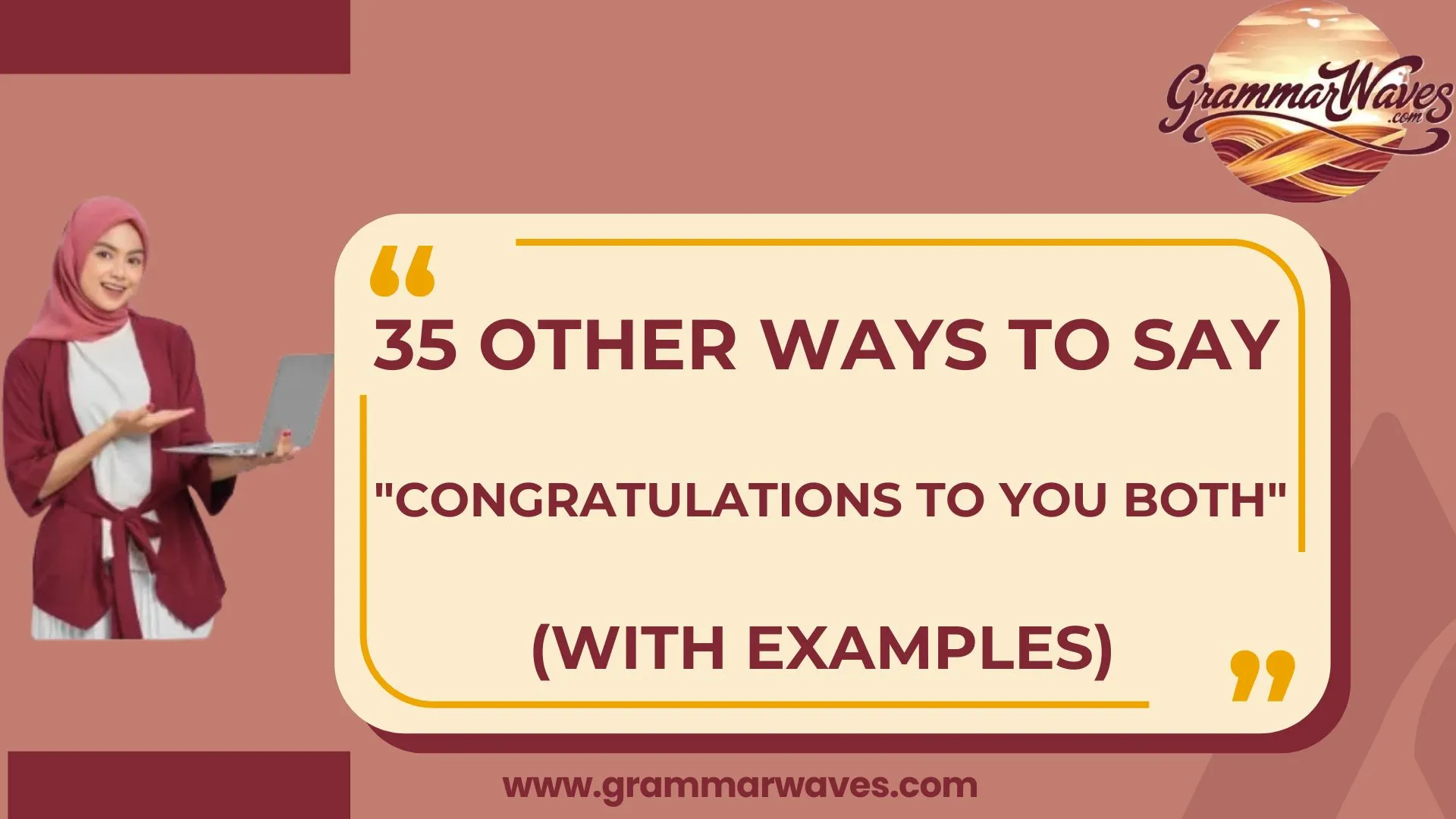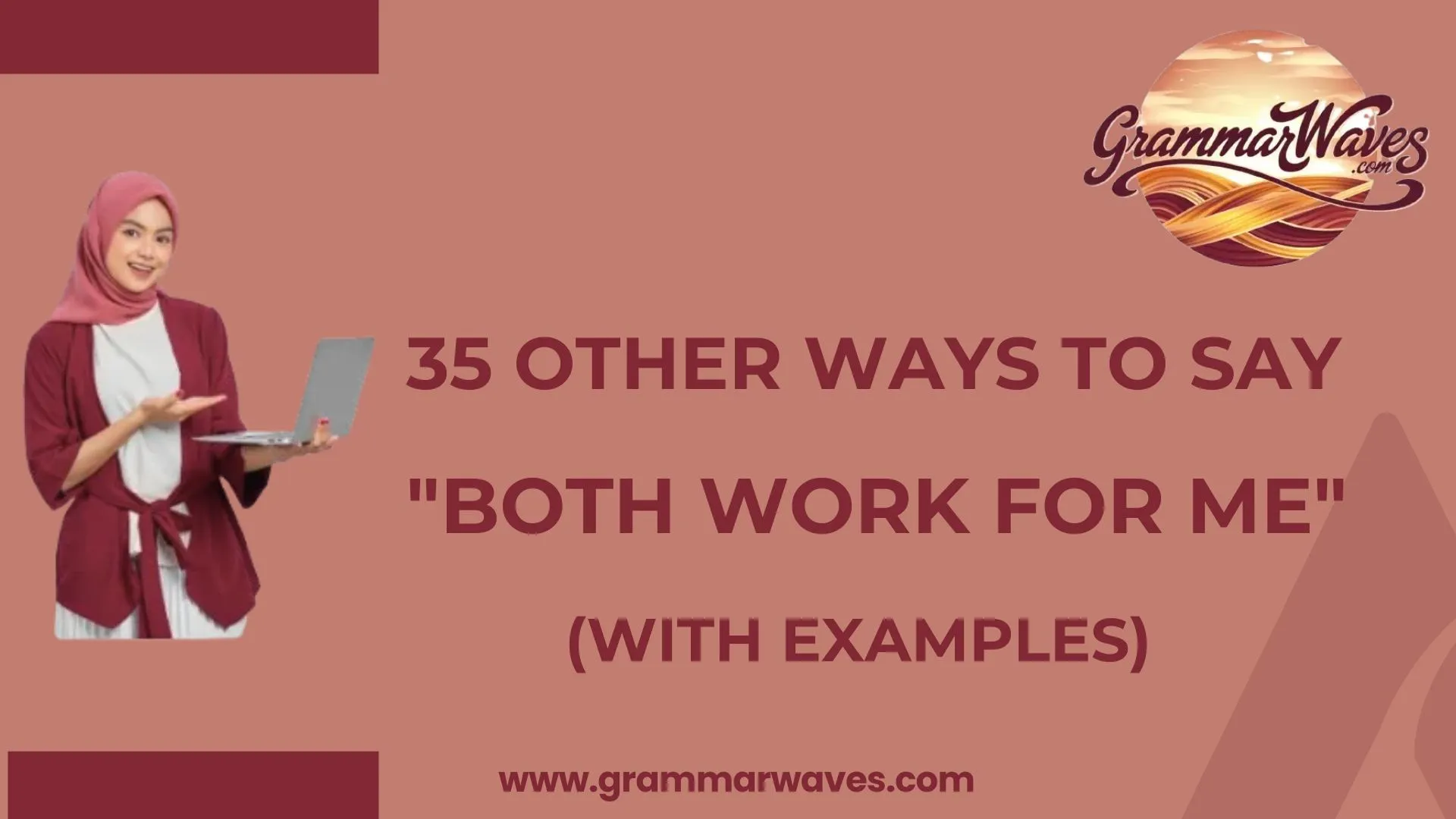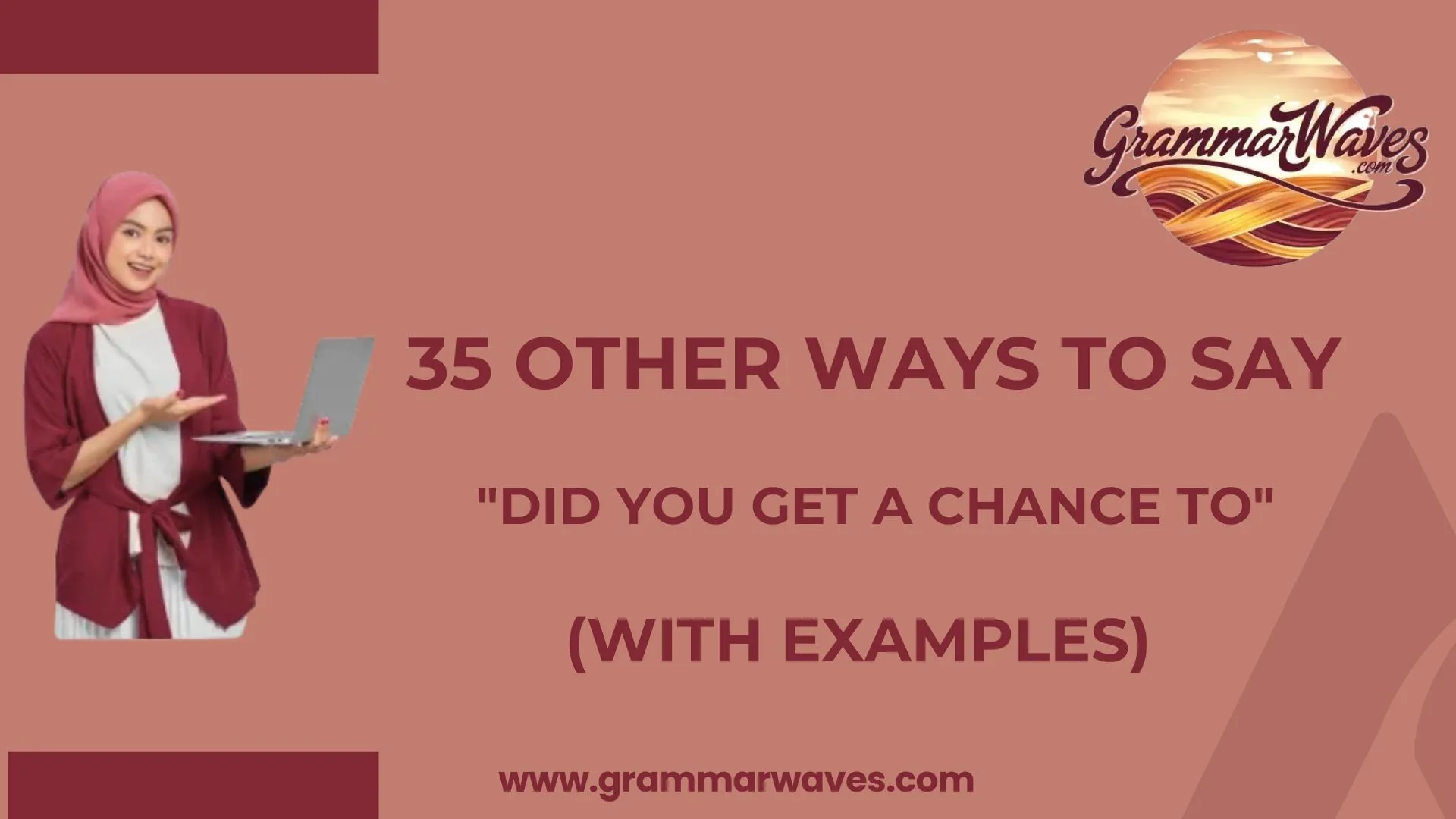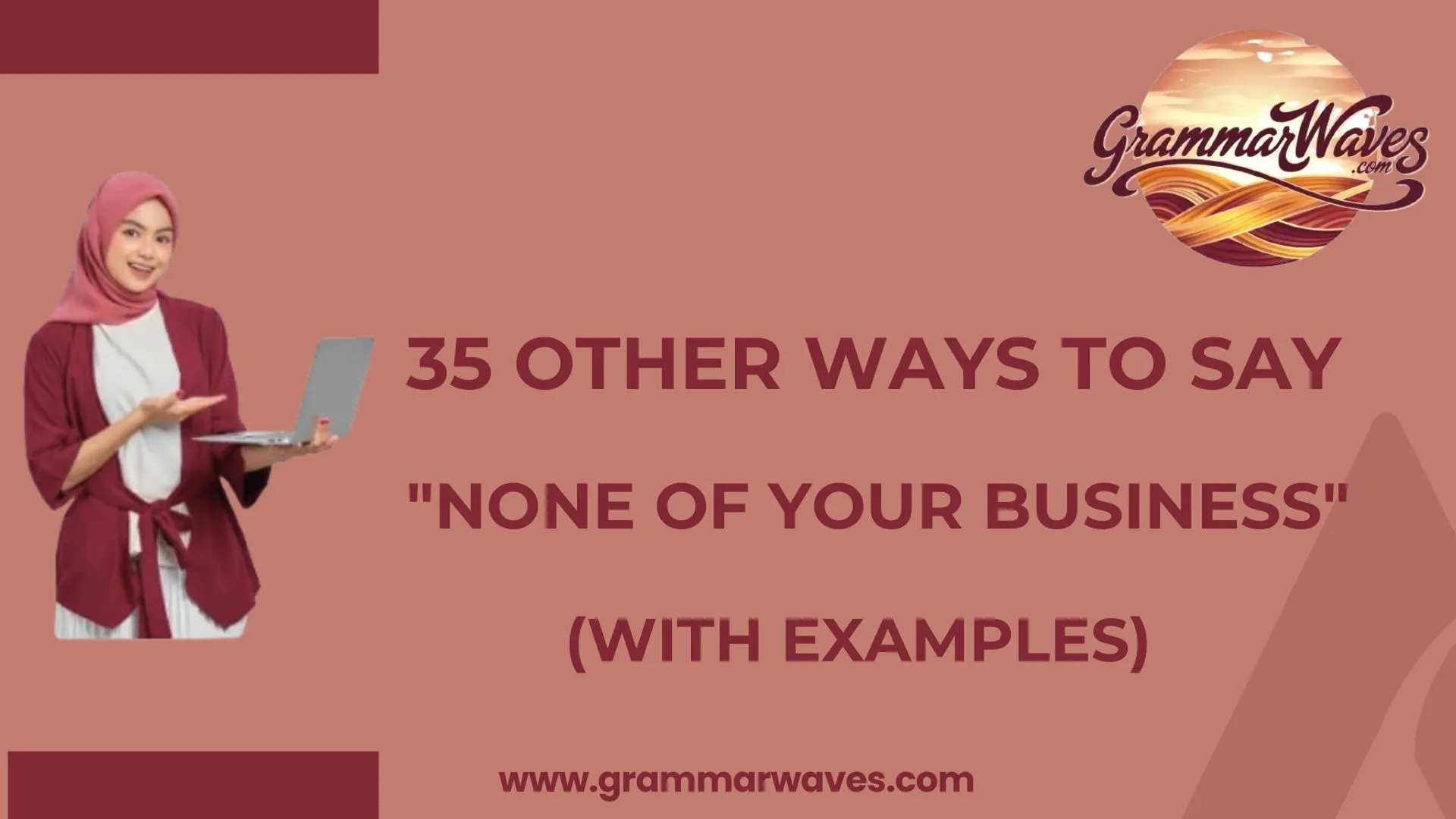When finding the right words to express care and encouragement, saying “Wishing You the Best” is a kind and thoughtful gesture that can truly make a difference. Exploring alternatives allows you to add warmth, depth, and personalization to your message, whether you’re congratulating a friend, supporting a colleague, or sending a heartfelt note.
These phrases help your words feel more meaningful, personal, and impactful, reflecting genuine care and professional communication. Using thoughtful expressions can strengthen connections and show your sincerity. By choosing the right words deliberately, you ensure your messages resonate and leave a lasting impression.
Personal and professional occasions alike benefit from alternatives that make your communication feel authentic, heartfelt, and supportive, demonstrating a genuine difference in the way you connect with others. With 35 carefully selected phrases, you can elevate even simple notes into moments of sincere encouragement and meaningful interaction.
What Does “Wishing You the Best” Mean?
The phrase “Wishing you the best” conveys a desire for someone’s success, happiness, or well-being. It expresses support, encouragement, and positive intentions, showing that you care about their future and hope for favorable outcomes in their endeavors.
When to Use “Wishing You the Best”
You can use this phrase:
- In personal messages to friends or family, celebrating milestones or changes
- To congratulate someone professionally on a promotion, new job, or achievement
- In farewell messages, cards, emails, or letters
Is It Professional/Polite to Say “Wishing You the Best”?
Yes! It is polite, professional, and widely accepted. For formal contexts, it may be paired with other phrases to enhance specificity and warmth.
Pros and Cons
Pros:
- Simple, clear, and universally understood
- Expresses care, encouragement, and positivity
- Can be used in casual or professional situations
Cons:
- Can feel generic if overused
- May lack emotional depth in highly personal situations
- Alternatives can provide more nuance or specificity
Wishing You the Best Synonyms:
- All the Best
- Best Wishes
- Wishing You Success
- Here’s to Your Future
- Hoping Everything Goes Well
- Wishing You Happiness
- Wishing You All the Success
- May Your Dreams Come True
- Wishing You Every Happiness
- May You Prosper
- Cheering You On
- Here’s to Your Continued Success
- Sending You Positive Energy
- Rooting for You
- Hoping for Your Success
- Wishing You Every Success
- May Your Efforts Be Rewarded
- Wishing You a Bright Future
- May All Your Goals Be Achieved
- Wishing You Happiness and Success
- May You Thrive
- Wishing You the Greatest Success
- May Luck Be on Your Side
- Hoping for the Best
- Wishing You Every Good Thing
- Here’s to Your Success
- Wishing You Fortune and Joy
- Hoping Your Journey Is Rewarding
- Sending You All My Best
- May Good Things Come Your Way
- Wishing You Success and Happiness
- May Your Efforts Bring Rewards
- Wishing You Bright Opportunities
- Hoping for Positive Outcomes
- May You Succeed in All You Do
All the Best
Meaning:
A concise way to express good wishes for someone’s success or happiness.
Explanation:
This classic alternative is short, friendly, and versatile.
Example:
“All the best with your new role at the company!”
Best Use:
Casual, professional, or friendly emails and messages
Worst Use:
Situations needing a more personal or heartfelt tone
Tone:
Friendly, supportive, professional
Best Wishes
Meaning:
Expresses positive intentions and hope for good outcomes.
Explanation:
Traditional and widely accepted in cards, emails, and letters.
Example:
“Best wishes on your upcoming wedding!”
Best Use:
Cards, emails, and formal or semi-formal occasions
Worst Use:
Informal texts to close friends may feel formal
Tone:
Polite, friendly, professional
Wishing You Success
Meaning:
Focused specifically on achievement and accomplishment.
Explanation:
Highlights your hope for the recipient’s success in professional or personal goals.
Example:
Wishing you success in your new business venture.”
Best Use:
Career milestones, academic achievements, and new projects
Worst Use:
Casual situations may sound formal for minor events
Tone:
Supportive, encouraging, professional
Here’s to Your Future
Meaning:
Encourages a positive outlook for what lies ahead.
Explanation:
Slightly celebratory and reflective, ideal for transitions or new beginnings.
Example:
Here’s to your future-may it be bright and fulfilling!”
Best Use:
Graduation, career changes, moving away
Worst Use:
Minor or everyday occasions; may feel dramatic
Tone:
Uplifting, optimistic, supportive
Hoping Everything Goes Well
Meaning:
Expresses care and optimism for a specific situation or event.
Explanation:
Polite, empathetic, and situationally appropriate.
Example:
Hoping everything goes well in your presentation today.”
Best Use:
Work presentations, events, or important personal milestones
Worst Use:
Casual greetings may sound overly formal
Tone:
Thoughtful, caring, polite
Wishing You Happiness
Meaning:
Focuses on emotional well-being and joy.
Explanation:
A heartfelt alternative emphasizing personal contentment.
Example:
Wishing you happiness in your new home!”
Best Use:
Birthdays, weddings, personal milestones
Worst Use:
Professional or formal letters may be too personal
Tone:
Warm, caring, personal
Wishing You All the Success
Meaning:
Emphasizes achievement and positive outcomes.
Explanation:
A stronger version of “all the best” tailored for professional or ambitious goals.
Example:
“Wishing you all the success in your upcoming project.”
Best Use:
Career or academic contexts
Worst Use:
Casual messages may feel overly formal
Tone:
Encouraging, professional, supportive
May Your Dreams Come True
Meaning:
Expresses hope for long-term fulfillment and personal aspirations.
Explanation:
More personal and inspirational than generic good wishes.
Example:
May your dreams come true as you start this new chapter of your life.”
Best Use:
Personal milestones, weddings, big life changes
Worst Use:
Casual work emails may feel sentimental
Tone:
Heartfelt, inspiring, warm
Wishing You Every Happiness
Meaning:
Expresses a wish for complete joy and satisfaction.
Explanation:
Polite and thoughtful, slightly formal, suitable for cards or letters.
Example:
“Wishing you every happiness in your marriage.”
Best Use:
Weddings, personal achievements, formal cards
Worst Use:
Casual texts may feel stiff
Tone:
Polished, caring, thoughtful
May You Prosper
Meaning:
Focuses on growth, success, and well-being.
Explanation:
Slightly formal, appropriate for professional or financial success wishes.
Example:
“May you prosper in your new business venture.”
Best Use:
Professional milestones, business emails, and formal congratulations
Worst Use:
Personal casual notes; may feel stiff
Tone:
Formal, professional, supportive
Cheering You On
Meaning:
Expressing support and encouragement for someone’s efforts.
Explanation:
Shows that you are emotionally invested in the person’s success.
Example:
“Cheering you on as you prepare for your big presentation!”
Best Use:
Friendly, casual, or motivational contexts
Worst Use:
Formal emails may feel too informal
Tone:
Encouraging, upbeat, supportive
Here’s to Your Continued Success
Meaning:
A phrase wishing ongoing achievement and progress.
Explanation:
Appropriate for someone already doing well, emphasizing future growth.
Example:
“Here’s to your continued success in your new role.”
Best Use:
Professional or semi-formal congratulations
Worst Use:
Minor achievements; may feel over-the-top
Tone:
Polished, supportive, professional
Sending You Positive Energy
Meaning:
Offering optimism and encouragement for a situation or endeavor.
Explanation:
Modern, friendly alternative conveying emotional support.
Example:
“Sending you positive energy for your upcoming interview!”
Best Use:
Casual, friendly, or motivational contexts
Worst Use:
Very formal communications; may seem informal
Tone:
Supportive, upbeat, encouraging
Rooting for You
Meaning:
Expressing personal support and confidence in someone’s success.
Explanation:
Informal, energetic way to show encouragement.
Example:
Rooting for you to nail that exam tomorrow!”
Best Use:
Friends, family, or informal workplace encouragement
Worst Use:
Formal or professional emails
Tone:
Casual, motivating, supportive
Hoping for Your Success
Meaning:
A formal way to wish someone achievement and good outcomes.
Explanation:
Polite and thoughtful, suitable for serious or professional contexts.
Example:
Hoping for your success in your new venture.”
Best Use:
Professional milestones, academic achievements
Worst Use:
Casual conversations may feel stiff
Tone:
Polished, professional, supportive
Wishing You Every Success
Meaning:
A formal, comprehensive good wish for success.
Explanation:
Appropriate for letters, cards, or formal emails.
Example:
“Wishing you every success as you take on this leadership role.”
Best Use:
Professional contexts or significant achievements
Worst Use:
Casual texts or friendly messages may feel formal
Tone:
Professional, encouraging, polished
May Your Efforts Be Rewarded
Meaning:
Expresses hope that someone’s hard work leads to positive results.
Explanation:
Highlights recognition of effort and desire for success.
Example:
“May your efforts be rewarded in this project-you deserve it!”
Best Use:
Professional recognition, academic encouragement
Worst Use:
Casual greetings; may feel formal
Tone:
Polished, supportive, thoughtful
Wishing You a Bright Future
Meaning:
A hopeful phrase for someone’s long-term success and happiness.
Explanation:
Warm and optimistic, often used in graduation or career transitions.
Example:
“Wishing you a bright future as you start this new chapter in your life.”
Best Use:
Graduations, career changes, life milestones
Worst Use:
Every day or minor achievements
Tone:
Warm, encouraging, inspiring
May All Your Goals Be Achieved
Meaning:
Expresses hope for success in personal or professional aspirations.
Explanation:
Slightly formal, ideal for professional or thoughtful notes.
Example:
“May all your goals be achieved in your new position.”
Best Use:
Professional letters, formal notes, and serious achievements
Worst Use:
Casual, friendly texts; may feel stiff
Tone:
Professional, supportive, optimistic
Wishing You Happiness and Success
Meaning:
Combines emotional well-being and achievement in a single phrase.
Explanation:
Balanced, thoughtful, and versatile.
Example:
Wishing you happiness and success in your new role.”
Best Use:
Professional and personal messages
Worst Use:
Overly casual texts may be too formal
Tone:
Warm, professional, encouraging
May You Thrive
Meaning:
A short, motivational, and empowering way to wish growth and prosperity.
Explanation:
Modern and concise alternative with a positive tone.
Example:
May you thrive in your new adventure!”
Best Use:
Friendly encouragement, informal professional notes
Worst Use:
Highly formal or ceremonial communication
Tone:
Motivating, optimistic, supportive
Wishing You the Greatest Success
Meaning:
Emphasizes top-level achievement and accomplishments.
Explanation:
Stronger, more emphatic version of standard good wishes.
Example:
Wishing you the greatest success in your upcoming presentation.”
Best Use:
Professional recognition, major milestones
Worst Use:
Every day minor achievements
Tone:
Polished, encouraging, professional
May Luck Be on Your Side
Meaning:
Expresses hope for favorable outcomes and fortune.
Explanation:
Informal, friendly, and encouraging, often used for events or competitions.
Example:
“May luck be on your side in the competition tomorrow!”
Best Use:
Casual encouragement, friendly support
Worst Use:
Formal professional correspondence
Tone:
Friendly, upbeat, supportive
Hoping for the Best
Meaning:
A flexible, empathetic phrase expressing hope for positive results.
Explanation:
It can be used in both casual and professional situations, conveying optimism.
Example:
Hoping for the best in your new project!”
Best Use:
Versatile; casual or semi-formal situations
Worst Use:
Overused phrases may feel generic
Tone:
Optimistic, caring, neutral
Wishing You Every Good Thing
Meaning:
Broad and heartfelt, wishing overall well-being and success.
Explanation:
Warm, thoughtful, and slightly personal.
Example:
“Wishing you every good thing as you start your new chapter.”
Best Use:
Personal letters, cards, milestone celebrations
Worst Use:
Professional emails may feel informal
Tone:
Heartfelt, warm, personal
Here’s to Your Success
Meaning:
Cheerful and celebratory phrase emphasizing achievement.
Explanation:
Short, friendly, and versatile for multiple occasions.
Example:
Here’s to your success in the upcoming project launch!”
Best Use:
Professional emails, friendly congratulations
Worst Use:
Overly personal contexts may need a warmer tone
Tone:
Encouraging, upbeat, professional
Wishing You Fortune and Joy
Meaning:
Combines success and happiness in a thoughtful phrase.
Explanation:
Reflective and slightly formal; often used in cards or letters.
Example:
Wishing you fortune and joy in your new home.”
Best Use:
Personal milestones, formal messages
Worst Use:
Casual texts may feel formal
Tone:
Warm, reflective, encouraging
Hoping Your Journey Is Rewarding
Meaning:
Focused on growth, experience, and positive outcomes.
Explanation:
Perfect for career changes, study abroad, or new ventures.
Example:
Hoping your journey is rewarding as you start your new role.”
Best Use:
Professional or life milestones
Worst Use:
Minor achievements; may feel overdramatic
Tone:
Thoughtful, encouraging, supportive
Sending You All My Best
Meaning:
Personal and caring version of “Wishing you the best”.
Explanation:
Conveys warmth and sincerity, suitable for close connections.
Example:
Sending you all my best as you start your new project!”
Best Use:
Friends, family, or close colleagues
Worst Use:
Highly formal situations; may feel too personal
Tone:
Warm, sincere, caring
May Good Things Come Your Way
Meaning:
A general, hopeful phrase for positive experiences and outcomes.
Explanation:
Uplifting and versatile for various situations.
Example:
May good things come your way in this new chapter.”
Best Use:
Friendly, supportive messages
Worst Use:
Professional formal emails may need more polished wording
Tone:
Optimistic, caring, encouraging
Wishing You Success and Happiness
Meaning:
Covers both achievement and personal contentment.
Explanation:
Balanced phrase for professional and personal messages.
Example:
Wishing you success and happiness in your new role!”
Best Use:
Cards, emails, personal or professional milestones
Worst Use:
Overly casual texts may prefer shorter phrases
Tone:
Warm, professional, thoughtful
May Your Efforts Bring Rewards
Meaning:
Encourages recognition and positive outcomes from hard work.
Explanation:
Slightly formal, ideal for professional or academic encouragement.
Example:
May your efforts bring rewards in your new project.”
Best Use:
Professional recognition, academic support
Worst Use:
Casual greetings may feel stiff
Tone:
Professional, supportive, thoughtful
Wishing You Bright Opportunities
Meaning:
Expresses hope for positive experiences and prospects.
Explanation:
Encouraging and forward-looking; suitable for career or life transitions.
Example:
Wishing you bright opportunities in your new job!”
Best Use:
Career moves, life milestones
Worst Use:
Minor daily events
Tone:
Optimistic, supportive, professional
Hoping for Positive Outcomes
Meaning:
Neutral yet supportive phrase for any situation requiring encouragement.
Explanation:
Can be used in personal or professional contexts.
Example:
Hoping for positive outcomes in your upcoming presentation.”
Best Use:
Professional, academic, or neutral situations
Worst Use:
Casual greetings may prefer friendlier alternatives
Tone:
Polite, thoughtful, neutral
May You Succeed in All You Do
Meaning:
Comprehensive and heartfelt wishes for success across endeavors.
Explanation:
Strong, motivational alternative suitable for formal or personal messages.
Example:
“May you succeed in all you do and find fulfillment along the way.”
Best Use:
Personal letters, professional congratulations, milestone events
Worst Use:
Minor events may feel overly formal
Tone:
Inspiring, supportive, warm
Final Thoughts
Expressing genuine care and encouragement can transform a simple message into a meaningful, memorable gesture. While “Wishing you the best” is a kind and widely used phrase, the 35 alternatives outlined in this guide allow you to add nuance, warmth, and personalization to your words. Choosing the right phrase demonstrates thoughtfulness and shows that you truly value the recipient’s happiness, success, and well-being.
These alternatives cover a variety of tones-from friendly and casual expressions like “Rooting for you” and “Cheering you on” to formal and professional options like “Wishing you every success” or “May your efforts be rewarded.” Some phrases focus on personal fulfillment, such as “May your dreams come true,” while others highlight professional achievements, like “Here’s to your continued success.” This diversity ensures that you can tailor your message to the situation, relationship, and context, whether for a friend, family member, colleague, or mentor.
By thoughtfully selecting the right wording, you elevate your communication from generic to genuine and impactful, leaving the recipient feeling encouraged, supported, and appreciated. Words carry emotional power, and leveraging these alternatives allows you to connect deeply, convey optimism, and celebrate milestones in a way that resonates.
Ultimately, the key is to match the tone, context, and relationship with the message. Doing so ensures that your well wishes are not just heard but felt, creating lasting impressions of care, respect, and positivity.
FAQs
What does “Wishing You the Best” mean?
It’s a phrase used to express good intentions, support, and hope for success or happiness in someone’s life. It conveys positivity, care, and encouragement, making the recipient feel valued and appreciated in both personal and professional contexts.
Can I use these alternatives professionally?
Yes. Phrases like “Wishing you every success,” “Here’s to your continued success,” and “May your efforts be rewarded” are professional, polite, and suitable for emails, letters, and workplace communication.
Are casual alternatives appropriate for friends and family?
Absolutely. Options like “Cheering you on,” “Rooting for you,” or “Sending you positive energy” convey warmth, friendliness, and encouragement, making your message feel personal and heartfelt.
How do I choose the right alternative?
Consider the relationship, context, and tone. Use professional phrases for work or formal achievements, uplifting phrases for milestones, and casual, warm options for friends and family. Tailor your message to ensure authenticity and impact.
Do these alternatives make my message more meaningful?
Yes. Using thoughtful alternatives demonstrates care, personalization, and attention, making your message more memorable, genuine, and emotionally resonant, rather than relying on a generic or overused phrase.

Hi, I’m Johnny Peter, the voice behind Grammarwaves.com – a platform dedicated to making English grammar simple, clear, and easy to understand for everyone. With years of experience in language education and a deep passion for writing, I break down confusing grammar rules into everyday English that anyone can grasp.
